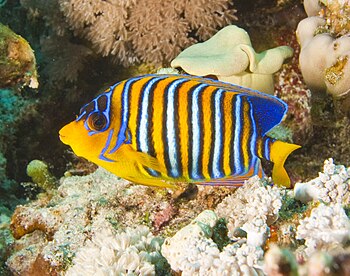 |
| Aiptasia mutabilis (Photo credit: Wikipedia) |
They have a tendency to move themselves around to find the most suitable place and once they have their foot into the rock work or similar they are very hard to remove manually. The vast majority of the time you will be unable to remove the by cutting or plucking as they retract deep into there crevices as soon as you attempt to get near to them.
There are many products on the market that are suitable for removing aiptasia. One of my personal favourites is Joe's Juice. I have used this many times and it never fails to kill the aiptasia that you have targeted with it. Personally I didn't like the syringe that came with it, so I used a separate syringe that I had with a very long fine nozzle on it which allowed me to get much closer to the anemone and in turn apply Joe's Juice to it. This is a fantastic product and is completely safe to your aquarium unlike some of the more unorthodox methods.
You should start off by killing the larger anemones first as they are the ones that are producing the vast majority of spores which can lead to further infestation. Then once you have managed to remove the vast majority of the large ones you can focus on the smaller one. It is a rather time consuming job to actually get rid of them all and you can never be certain that they will all be gone as they embed themselves deep in the rockwork and other crevices that they deem suitable for their home. However you will be able to keep them under control and as soon as a new one appears or seems to popup out of nowhere you will be able to treat them accordingly.
Some of the more natural methods to removing and controlling aiptasia are to use actual marine inhabitants that consume them as part of there normal diet. Peppermint shrimp or a good choice for helping to reduce the amount but at the same time there are mixed reviews on the effectiveness as they don't just consume aiptasia and may only destroy a few of them. Between 4-6 peppermint shrimp for every 30 gallons of water should be adequate to help keep aiptasia under control, but as I mentioned earlier they also eat other foods such as fish and coral food you maybe adding to your aquarium.
Copperband Butterflyfish will also eat aiptasia, but it is recommended that your tank be 75+ gallons to keep these fish. They love to eat aiptasia and are an absolutely stunning fish to look at and watch. One problem with these fish is that they may start to target your corals and some of your invertebrates as food as well. So once again these may not be the best solution for everyone.
A more recent addition to the market, or should I say an ever increasing popular choice is the Berghia Nudibranch. These are extremely effective at destroying aiptasia as it is the only thing they consume for food. The main issue is that once they have ridded your tank of infestation they will slowly begin to die as they will starve to death. An alternative to buying Berghia Nudibranch is to actually rent them from a Local Fish Shop, which is also becoming common practice. Other ways to obtain them would be too look at your look marine / reef clubs as they also quite often have members that rent/lend them out to member's tanks.
Removing these pests from your marine aquarium is far from an easy task and can be time consuming. As previously mentioned Joe's Juice is one of the quickest and most effective ways of ridding your aquaria of these pests. Keep a look out for more articles from me. In a future article we will be looking into the use of a Majano Wand to rid your aquaria of aiptasia.
Matt @ Coralswap has over 5 years experience in setting up and maintaining Marine Aquariums. Why not visit our site and learn more about maintaining and setting up marine aquariums as well as trading corals & frags with our other members. We hope to see you soon! Coralswap - Swap Corals You can also visit our store at Coralswap Store Cleartides Article Source: EzineArticles |







